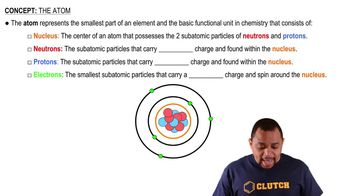Here are the essential concepts you must grasp in order to answer the question correctly.
Ionization Energy
Ionization energy is the energy required to remove an electron from a gaseous atom or ion. It is a key factor in determining an element's reactivity and is influenced by the atomic size and the effective nuclear charge. Generally, ionization energy increases across a period in the periodic table and decreases down a group.
Recommended video:
Periodic Trends
Periodic trends refer to the predictable patterns observed in the properties of elements as you move across or down the periodic table. For ionization energy, elements on the right side of the table (like chlorine) typically have higher ionization energies than those on the left (like antimony), due to increased nuclear charge and decreased atomic radius.
Recommended video:
Atomic Structure
The atomic structure of an element, including the number of protons, neutrons, and electrons, plays a crucial role in determining its chemical properties. Elements with a higher number of protons generally have a stronger positive charge in the nucleus, which can attract electrons more strongly, leading to higher ionization energies.
Recommended video:
 Verified step by step guidance
Verified step by step guidance


